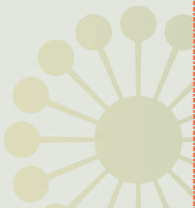NECESSARY
ILLUSIONS “I don’t want realism. I want magic,” Blanche tells Mitch in Tennessee Williams’ A Streetcar Named Desire. “Yes, yes, magic! I try to give that to people. I misrepresent things to them. I don’t tell the truth. I tell what ought to be truth. And if that is sinful, then let me be damned for it! Don’t turn the light on!” In the beginning of Williams’ The Glass Menagerie, Tom tells the audience, “The play is memory; it is not realistic.” We live between reality and fantasy, between memory and hope. And art is the lens that focuses and distorts our perceptions of truth, and what ought to be truth. Fantasy helps us see reality, and memory keeps hope alive. The artist, through the creative process, helps us to look at life and see it from a different perspective. That perspective may be through the shared experience of the artist or through the invoking of our own life experiences. Sometimes, through art, we are invited to visit the mind of the creator. Sometimes we may be compelled to wander through the closed rooms of our own minds to reexplore forgotten insights or reexamine old memories and lost truths. On other occasions we are given a tour of the undiscovered regions of worlds that interface with our own, but which we have largely ignored because we either didn’t have the time or the interest or perhaps the courage to give them consideration. The Film Society of Lincoln Center ran a program in 1994 called “The Ministry of Illusion: German Film 1933-45.” It was a program of 29 entertainment films, largely comedy and musicals, historical epics and melodramas, representing most of the motion picture production of the Third Reich. Tom Reiss, in his New York Times review, says that Joseph Goebbels, Minister of Popular Enlightenment and Propaganda, was given the task of creating the Hollywood dream factory in hell. He was operating under the theory that propaganda worked best when an audience didn’t know it was there. Thus, when the real war turned against Germany, the war of illusion was brought in. The cinemas were the first buildings to be reopened after the air raids so that the populace could participate in an alternate reality and not confront a demonic ideology. The danger in politics, as well as in one’s own state of mental health, is not recognizing the difference between reality and illusion. For some reason or another, the holiday season that surrounds the winter solstice always seems to bring with it a collection of cinematic art that takes us on flights of fantasy and illusion. Witness this season’s offerings: Stargate, Star Trek:Generations, Mary Shelley’s Frankenstein, Interview With a Vampire, The Santa Clause, etc. It will also be a time to resurrect our traditional fantasies such as The Nutcracker and Miracle on 34th Street. We need fantasy; we need myth. They help us look at ourselves and see who we really are, where we have come from, and where we are headed. When you watch Charles Dickens’ A Christmas Carol again, let the three spirits not only conjure the past, present and future, but let them also induce memory, insight, and change. Don Quixote, the Man of La Mancha, was right: “Too much sanity maybe madness and the maddest of all, to see life as it is and not as it should be.” We need December for fantasy and for dreaming and for truth. But we also need to know the difference. Dr. Harry L. Serio |
|
